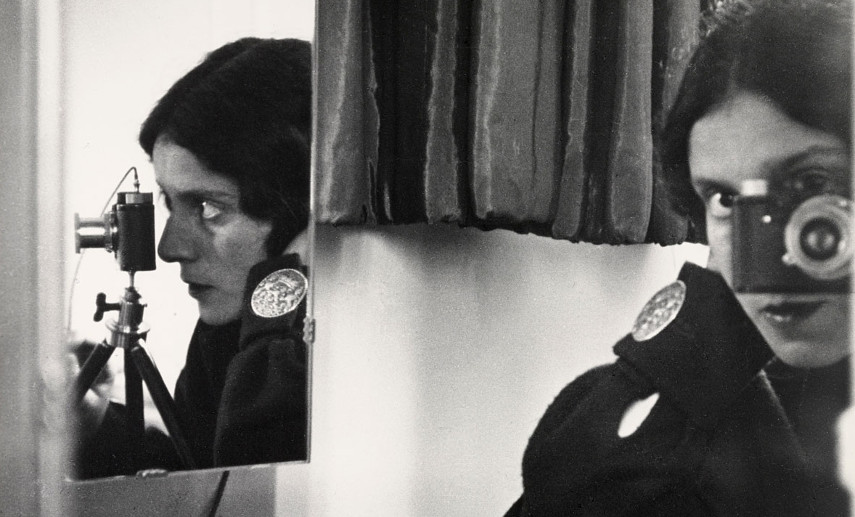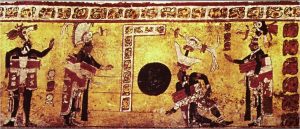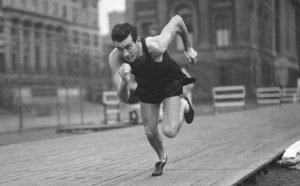At the onset of World War I, few keen-eyed political spectators were surprised or concerned for war. The tensions between European powers had been building for quite some time. Very few, however, thought that the war would be such a bloody and atrocious war. By the end of the global affair, Europe was in ruins, particularly the Germans, who suffered the consequences of massive reparations and massive inflation.1 Disillusionment among the common people was high even by the middle of the war, and women were making a stand for voting rights while they united with pacifists against the war.2 Hannah Hoch was one woman who expressed her desire for equality, and she did so by radical expression through art. The aftermath of World War I was especially a time when art was more than a reflection of societal changes; art served as a plea for change, as a tool for political expression, and as a critique of society and culture. The rapid explosion of political art at the dawn of the twentieth century was felt across the western hemisphere through the works of Diego Rivera and Frida Kahlo, through Pablo Picasso and Wassily Kandinsky, and for a short period of time, through the Dada Movement.
The Dada Movement was a trend in art, literature, and music beginning shortly before the end of World War I. While Dada had no official set of principals by which it operated, the main characteristic of Dada was revolt against the Bourgeois, against tradition, against restrictive government, and against the commonly accepted restrictions of what was or was not art. Dada often encouraged and espoused left-wing ideology, particularly communism and anarchism. The movement came to fruition in Zurich, Switzerland at the Cabaret Voltaire. Hugo Ball, the founder of Cabaret Voltaire, named it after the French philosopher Voltaire who praised rational and scientific thought and condemned irrational superstition. The salon quickly emerged as an epicenter for artists in exile; the emergence of a movement opposed to the bourgeoisie, the status-quo, and what might be called today “The Man,” “big brother,” or “the system,” flowed naturally from a confluence of radical thinkers at the Cabaret Voltaire.3 This movement, though not completely united, emerged as a trend in Berlin around 1916 during the war, particularly out of the leadership of the young woman Hannah Hoch and her lover Raoul Hausmann. Hausmann introduced Hoch to avant-garde art and to the Dada movement in Zurich shortly after her return to Berlin in 1916. Hoch had been serving as a member of the Red Cross throughout 1914, taking a short break from her time at university, which had begun in 1912. Hoch and Hausmann became consumed by the Dada movement, innovating and perfecting a new artistic medium of their own, the photo-montage. Hausmann also created Dada poetry, which, according to the National Gallery of Art, was supposed to offer, “both a metaphor for the destruction caused by war and a commentary on the deceitfulness of language.”4 Here is a video recording of his poem, Fmsbw.
https://www.youtube.com/watch?v=y5vxwhibzfw
Although it may not seem significant by today’s standards, the photo-montage broke the boundaries of classical art. Rather than paint on canvas, Hoch and Hausmann manipulated pieces of photographs to create a new piece of art. Although Hausmann and Hoch were romantic partners and associates in art, Hoch stood out on her own.5 In 1919, one of Hoch’s most famous works was published. It was called “Cut With a Kitchen Knife: Dada Through the Last Weimar Beer-Belly Cultural Epoch of Germany,” and it was featured in 1919 in the First Berlin Dada Exhibition. Viewed closely, a feminist agenda is clear in the photo-montage. At the bottom right corner of the artwork, Hoch placed a cutout of her face in place of her signature; immediately to the right of that cutout is a map of Europe highlighting all of the nation-states that acknowledged women’s voting rights at that time. But Hoch’s artwork addressed more than feminism. The same painting depicts a sort of spectrum of political ideology, with followers of the Dada Movement on the bottom, communist theorists and social scientists in the middle, and German political authorities like Kaiser Wilhelm II at the top right. Near the head of Wilhelm is a script that reads “die anti dada istiche,” or the “the one who is anti-Dada.” Hoch’s work was also promoting the Dadaist movement as a political movement, as an anarchist movement still farther left than communism, and as opposed to the machinery of the German regime. Hoch’s art was displayed again in 1920 at the First International Dada-Fair.

Two years later, Hoch and Hausmann parted ways and Hoch became romantically involved with Dutch writer, Til Burgman, after meeting her on a trip in Italy. Hoch never publicized her lesbian affair. The couple lived at The Hague for three years, and for another six in Berlin until their split in 1938. Although Hoch was called a “cultural Bolshevik” by a Nazi commentator in 1937, and her art was declared “degenerate art” by the Nazi party, Hoch lived and worked in Berlin throughout World War II, and until her death in 1978. Hoch’s work received little historical attention for some time due to her refusal to allow researchers to view her papers during her lifetime. However, upon the sale of her estate after her death, historians have begun to illuminate the story of this fascinating woman.6
- Salem Press Encyclopedia, 2017, s.v. “World War I,” by Robert F. Gorman. ↵
- Helen McCarthy, “Pacifism and Feminism in the Great War,” History Today 65, no. 4 (April 2015): 4–5. ↵
- Carmen Stonge, “Dada Movement Emerges at the Cabaret Voltaire,” Great Events from History: The Twentieth Century (Online Edition) (Salem Press, 2013). ↵
- “DADA – Techniques – Sound,” https://www.nga.gov/exhibitions/2006/dada/techniques/sound.shtm. ↵
- “Höch, Hannah (1889 – 1978),” in Who’s Who in Gay and Lesbian History, edited by Robert Aldrich, and Garry Wotherspoon (New York: Routledge, 2002). ↵
- “Höch, Hannah (1889 – 1978),” in Who’s Who in Gay and Lesbian History, edited by Robert Aldrich, and Garry Wotherspoon (New York: Routledge, 2002); C. Townsend, “Exhibitions: Hannah Hoch,” Art Monthly no. 374 (2014): 20. ↵



41 comments
Luisa Ortiz
This article was very interesting to me because I had never heard of “The Dadas Movement” I was so captivated by both her artistic skills and her powerful attitude! I’m glad this article was writing to give the artist Hannah Hoch the spotlight she truly deserves. Also, the images are really cool! Great job!
Victoria Rodriguez
I am not very familiar with art or the periods in which art evolved. Through this article I learned of the art movements revolt and the woman behind it. I am pleasantly surprised that this article was interesting and historical as some articles that focus on art tend to be lifeless because of the interesting art discussed takes away the show. However, you did well in explaining the art and the time period without the art completely stealing your article. Well done!
Tyler Sleeter
Really great article with so much information. I am not familiar with The Dada Movement and I found it to be interesting. I like that the artists used literature and art as a form of political resistance, I have never heard of artists doing this before. It seems like the artists were able to push for the things they believed in by creating these amazing works for everyone to view. I like that you included some examples so that we could see exactly what it is they did. I like that she was able to manipulate photographs to make them represent the principles of The Dada Movement. Very interesting article.
Fumei P.
It’s my first time hearing about the Dada Movement, and Hannah Hoch. I’m no artist but I like she thought out of the box and made a photo montage versus using traditional methods of art, like painting on canvas. I really like that she used art to express her feelings and to promote the Dada movement, which is a better alternative to violence.
Caroline Bush
Interesting article! Before reading this article I had never heard about The Dada Movement or Hannah Hoch. After reading this though I have a new appreciation for her and the works she put together. I really enjoyed the amount of detail in the article and the images you used. I felt that the image’s helped give a face to Hoch’s works. Overall I really enjoyed this article and really enjoyed reading about a topic I didn’t know anything about until now.
Natalia Flores
The Dada Movement is something I’ve never heard of! I’m so thankful that there is an article over art and propaganda during WWI. It’s a topic that is highly overlooked (in my opinion) since art is seen more as entertainment rather than a platform for political and social reform. It’s amazing that Hoch still lived in Berlin during WWI and that she was able to express her political opinion so loud.
Andrew Dominguez
Before this article i had never heard of Hannah Hoch, and what the meaning of her art. Just like Frida during the same time, their art was expressing women rights. This painting help spread the idea of equality, since mass amounts of individuals will view the photo. What is interesting is that her pictures aren’t drawn but a series of pictures cut and added together. The best part she included only areas were women had the right to vote.
Megan Barnett
Hannah Hoch and the Dada Movement were both completely new topics for me, but I thought this article did a wonderful job of explaining both in detail to where I could understand it clearly. I thought it was really cool that her and Hausmann manipulated photos to express a different way of art because I know during that time it was probably not that easy as it is today.
Josemaria Soriano
This article has particularly interested me because it emphasizes a purpose of art not so spoken by most people: denounce. The vast majority of people consider that art is simply painting, that it is a simple “decoration”. However, the power of art to influence the masses makes art extremely useful. Art is able to unite people, to create symbols, to inspire, to make the ethereal, transcendent. Even if we analyze the history of the world we can note that many historical periods had the art as a cause of great changes. For example, the evolution from the medieval era to the Renaissance was due to the fact that many artists stopped using God as the main character of their works, and instead of Him they placed the human being. From this period we have Leonardo Da Vinci, who graphed perfectly and proportionately human physiology. We also have Michelangelo, who made precise and hyper-realist sculptures of the human being. After them we havd the humanist ideas that ended up burying the Middle Ages. In the same way, in the First World War it was possible to sensitize the population about the atrocities caused by the war thanks to the use of art. The art is immortal, and Pablo Picasso knew this, showing it on his painting “Guernica”, a cry of lament towards the atrocity committed in the Spanish city. In conclusion, art is a tool with the potential to unite human beings, to raise awareness, which the Dada movement did splendidly.
Cameron Ramirez
Before reading your article, I had little no to knowledge about Hannah Hoch and The Dadas. After reading your article, it helped me learn more about this kind of art that Hannah Hoch made with the Dada artists. I think this topic was very interesting for what was the Dada art back in the 1920s. Overall, good work on the article and I enjoyed the pictures you added because it helps convey your article because images are need to understand what Hannah and the Dad artists did.